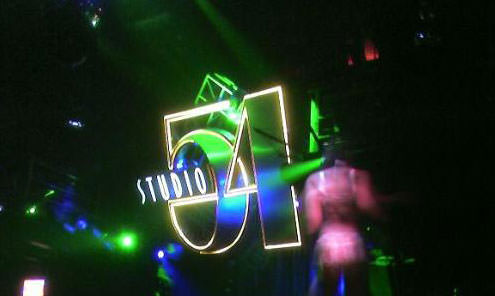Disco house basslines are unashamedly retro, harking back to the 70s heyday of white suits and platform boots. Oliver Curry explains how to add a hint of that classic Studio 54 vibe to your own house tracks.
As one of the funkiest forms of house music, disco house has its roots firmly planted in disco itself, soul and funk. In this edition of Passing Notes we’ll examine two simple melodic techniques used in writing a classic disco bassline and explain how they can be applied to disco house tracks in order to give a truly authentic funky groove.
Let’s start by taking a look at a classic disco bassline. We’ll focus on Sister Sledge’s 1979 hit ‘He’s The Greatest Dancer’, written and produced by Nile Rodgers and Bernard Edwards of Chic:
Focussing on the intro, here’s what Edwards’ bassline looks like when sequenced:
And how it sounds when replayed over a simple disco house beat:
Like a huge number of disco basslines, this one is based around the minor pentatonic scale, which is essentially a natural minor scale omitting the 2nd and 6th notes. Omitting the 2nd and 6th notes of the full minor scale gives the minor pentatonic a slightly bluesy feel. It sounds like this:
Leading notes
The minor pentatonic scale is a great starting point for a disco house bassline, but in this case things are slightly more complex. You’ll notice that the bassline also contains the notes C# and F#. These notes (highlighted in red) are not in the natural minor scale, but are known as leading notes (sometimes also referred to as leading tones).
You can see that the red notes are all one semitone below the note which follows, leading up to the next note in the scale. The table below shows the pentatonic scale in yellow, the leading notes in red:

With these leading notes added, the scale now sounds like this:
Using the pentatonic minor scale with added leading notes, let’s bring the theory into a modern disco house context. Check out the simple bassline sequenced below, with the leading notes again highlighted in red. In this case, some leading notes lead up to the following note, a semitone higher, while some lead down the scale.
And, for comparison, check out how the bassline sounds if we replace the leading notes with the nearest note in the standard minor pentatonic scale. We can clearly hear that removing the leading notes detracts from the character and movement of the bassline.
Finally, using the major and minor 7th chords we explored in a previous Passing Notes, we can start developing our simple bassline into a full track.
A working knowledge of minor pentatonic scales and leading notes might not get you to quite the same level as a legend like Bernard Edwards, but these simple tricks will help inject your basslines with a hint of authentic disco credibility.



03.57 AM
I love these. Please keep doing them.
07.03 AM
What an exceptional way to build your audiences understanding. StrippIng it right down to the basic and keeping it interesting. This is the best music mag by miles!
01.26 PM
best web site EVER!
07.44 PM
This article is pure gold! Great info boiled down to it’s simplest form. I’d gladly pay for these. Please provide move. Cheers.
07.44 PM
What did you use for the bass sound?
11.55 AM
Hey Ben,
I just used one of Logic’s EXS instruments with a very small amount of distortion added for the bass sound.
Cheers,
Oliver
01.02 AM
This is really great thanks
02.29 AM
what’s the criteria for choosing the leading notes?
05.21 PM
Please don’t forget the purpose of choosing those chromatic leading tones. It’s about the chords that you’re using. The inclusion of the #7 (F# in key of g min) is so that your dominant chords (D) create tension and resolution with the tonic (G). In the case of the #4 (C#), you could use it to resolve into your dominant chord (C# is a half-step away from D, and wants to resolve into the D). Then your bassline will have more purpose in the context of the chord progression/harmony. Not to say that you can’t use chromatic passing tones regardless of what the harmony is, but that isn’t the function of leading tones. Plus, you want each note of your bassline to be strong and fit nicely into the puzzle.
06.50 PM
Nice Article..Thanks !
01.02 PM
Again very cool! You should make a book of all the amazing info you got on Attack magazine. I would buy it!!!
10.39 PM
These are the best tutorials I’ve ever seen. Huge thanks and please keep them coming! 🙂
09.10 AM
So glad I discovered this site. Excellent work.
09.48 AM
Love this mag! Serious for enthusiasts and not the usual crap.
12.16 AM
nietzkov creates very funk basslines
09.57 AM
very good article helped me a lot
02.04 AM
Really helpful!
08.12 AM
Wow this is awesome, am glad that i found this site.
:Dthanks